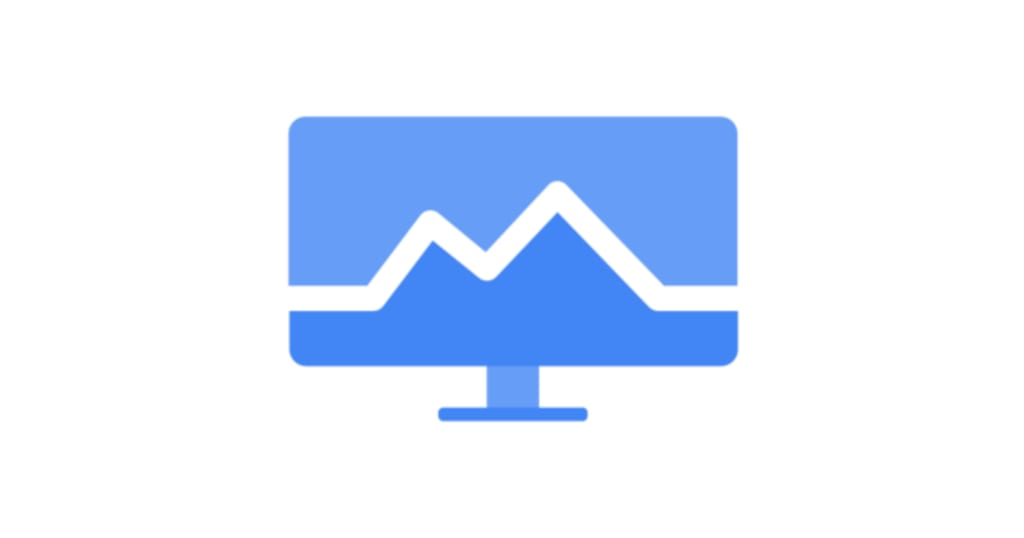Why Google Cloud Monitoring is Essential for a Successful Digital Transformation Journey
Successful Digital Transformation Journey

In today's fast-paced digital landscape, businesses are constantly striving to stay ahead of the competition and deliver exceptional user experiences. The key to achieving this lies in embracing digital transformation. And at the heart of any successful digital transformation journey is effective monitoring of cloud infrastructure. That's where Google Cloud Monitoring comes into play. With its powerful suite of tools and services, Google Cloud Monitoring empowers businesses to gain real-time insights into their cloud-based resources, applications, and services. By providing comprehensive visibility and actionable data, Google Cloud Monitoring enables businesses to identify and resolve performance issues, optimize resource allocation, and ensure the smooth operation of their digital infrastructure. In this article, we'll delve into the reasons why Google Cloud Monitoring is essential for a successful digital transformation journey, and how it can help businesses unlock their full potential in the digital realm.
Importance of monitoring in digital transformation
Digital transformation is all about leveraging technology to drive business growth and improve operational efficiency. It involves adopting new tools, processes, and strategies to meet the ever-evolving demands of the digital world. However, this transformation also introduces new challenges, particularly in terms of managing and monitoring the complex cloud-based infrastructure that underpins modern digital businesses.
Effective monitoring is crucial for several reasons. Firstly, it provides businesses with real-time insights into the performance, availability, and utilization of their cloud resources. This visibility allows businesses to proactively identify and address potential issues before they impact the end user experience. Secondly, monitoring helps businesses optimize resource allocation by identifying underutilized or overprovisioned resources. By right-sizing their infrastructure, businesses can reduce costs and improve efficiency. Lastly, monitoring enables businesses to ensure the smooth operation of their digital infrastructure, allowing them to deliver a seamless user experience and maintain customer satisfaction.
What is Google Cloud Monitoring?
Google Cloud Monitoring is a comprehensive monitoring solution offered by Google Cloud Platform. It provides businesses with a centralized platform to monitor the performance, availability, and health of their cloud-based resources, applications, and services. Google Cloud Monitoring collects and analyzes metrics, logs, and traces from various sources, allowing businesses to gain actionable insights and make data-driven decisions.
Key features and benefits of Google Cloud Monitoring
Google Cloud Monitoring offers a range of features and benefits that make it an essential tool for businesses embarking on their digital transformation journey. Firstly, it provides real-time monitoring and alerting capabilities, allowing businesses to proactively respond to issues and minimize downtime. With customizable dashboards and alerting policies, businesses can set up tailored monitoring workflows that align with their specific requirements.
Secondly, Google Cloud Monitoring offers comprehensive visibility into the performance and health of cloud resources. It collects and analyzes metrics from various sources, including virtual machines, containers, databases, and network components. This holistic view enables businesses to identify performance bottlenecks, optimize resource allocation, and ensure the smooth operation of their digital infrastructure.
Furthermore, Google Cloud Monitoring integrates seamlessly with other Google Cloud Platform services, such as Google Cloud Logging and Google Cloud Trace. This integration allows businesses to correlate and analyze metrics, logs, and traces together, providing a deeper understanding of their application performance and behavior.
How Google Cloud Monitoring supports digital transformation
Google Cloud Monitoring plays a critical role in supporting businesses throughout their digital transformation journey. Here are some ways in which Google Cloud Monitoring enables businesses to unlock their full potential in the digital realm:
- Proactive problem identification and resolution: Google Cloud Monitoring provides real-time insights into the performance and health of cloud resources. By setting up proactive alerting policies, businesses can be notified of potential issues before they impact the end user experience. This proactive approach allows businesses to resolve problems quickly and minimize downtime.
- Optimized resource allocation: Google Cloud monitoring collects and analyzes metrics from various sources, enabling businesses to identify underutilized or overprovisioned resources. By right-sizing their infrastructure, businesses can optimize resource allocation, reduce costs, and improve operational efficiency.
- Improved user experience: With comprehensive visibility into the performance and health of their cloud-based resources, applications, and services, businesses can ensure a smooth user experience. Google Cloud Monitoring allows businesses to identify and address performance bottlenecks, optimize response times, and deliver a seamless user experience.
- Data-driven decision making: Google Cloud Monitoring provides businesses with actionable data and insights. By analyzing metrics, logs, and traces, businesses can make informed decisions to improve performance, optimize resource allocation, and drive business growth.
Implementing Google Cloud Monitoring in your digital transformation journey
Implementing Google Cloud Monitoring in your digital transformation journey is a straightforward process. Here are some steps to get started:
- Assess your monitoring requirements: Identify the key metrics and resources that are critical to your business operations. Determine the level of visibility and granularity you require for monitoring.
- Set up monitoring agents and integrations: Install monitoring agents on your virtual machines, containers, and other resources to collect metrics and logs. Integrate Google Cloud Monitoring with other Google Cloud Platform services to correlate and analyze data.
- Configure custom dashboards and alerting policies: Customize your monitoring dashboards to display the metrics and insights that are most relevant to your business. Set up alerting policies to receive notifications when specific conditions or thresholds are met.
- Monitor and analyze: Regularly monitor your cloud resources, applications, and services to gain insights into their performance and health. Analyze the collected data to identify areas for improvement and optimize resource allocation.
Best practices for using Google Cloud Monitoring effectively
To make the most of Google Cloud Monitoring, consider the following best practices:
- Define meaningful metrics: Identify the key performance indicators (KPIs) that align with your business goals. Focus on metrics that directly impact the user experience and measure the success of your digital transformation initiatives.
- Set up intelligent alerting: Configure alerting policies based on meaningful thresholds and conditions. Avoid excessive alerting that may lead to alert fatigue. Ensure that alerts are actionable and prioritize critical issues.
- Leverage automation: Use automation tools and scripts to streamline monitoring workflows. Automate the setup and configuration of monitoring agents, dashboards, and alerting policies to save time and reduce manual effort.
- Continuously optimize: Regularly review and optimize your monitoring setup. Refine your dashboards, alerting policies, and metrics based on changing business needs and priorities. Continuously evaluate the effectiveness of your monitoring strategy.
Comparison of Google Cloud Monitoring with other monitoring solutions
While Google Cloud Monitoring is a powerful tool, it's important to consider other monitoring solutions available in the market. Here's a brief comparison of Google Cloud Monitoring with other popular monitoring solutions:
- Amazon CloudWatch: Amazon CloudWatch, offered by Amazon Web Services (AWS), offers similar monitoring capabilities to Google Cloud Monitoring. However, Google Cloud Monitoring has tighter integration with Google Cloud Platform services, making it a preferred choice for businesses already using Google Cloud Platform.
- Microsoft Azure Monitor: Microsoft Azure Monitor, part of the Microsoft Azure ecosystem, provides comprehensive monitoring and analytics capabilities. However, Google Cloud Monitoring offers advanced capabilities for container monitoring and integration with Google Cloud Platform services, making it a suitable choice for businesses leveraging Google Cloud Platform.
Conclusion and key takeaways
Google Cloud Monitoring is essential for businesses embarking on a digital transformation journey. It provides comprehensive visibility and actionable data, enabling businesses to identify and resolve performance issues, optimize resource allocation, and ensure the smooth operation of their digital infrastructure. By proactively monitoring their cloud-based resources, applications, and services, businesses can deliver exceptional user experiences, reduce costs, and drive business growth. Incorporating Google Cloud Monitoring into your digital transformation strategy can help you unlock the full potential of your business in the digital realm.
Key takeaways:
- Effective monitoring is crucial for successful digital transformation.
- Google Cloud Monitoring provides real-time insights and comprehensive visibility into cloud resources.
- Google Cloud Monitoring supports proactive problem identification and resolution, optimized resource allocation, improved user experience, and data-driven decision making.
- Implementing Google Cloud Monitoring involves assessing requirements, setting up monitoring agents and integrations, configuring dashboards and alerting policies, and monitoring and analyzing data.
- Best practices include defining meaningful metrics, setting up intelligent alerting, leveraging automation, and continuously optimizing.
- Case studies showcase the benefits of Google Cloud Monitoring in driving successful digital transformation.
- Google Cloud Monitoring can be compared with other monitoring solutions like Amazon CloudWatch and Microsoft Azure Monitor.
- Incorporating Google Cloud Monitoring into your digital transformation journey can help unlock your full potential in the digital realm.





Comments
There are no comments for this story
Be the first to respond and start the conversation.